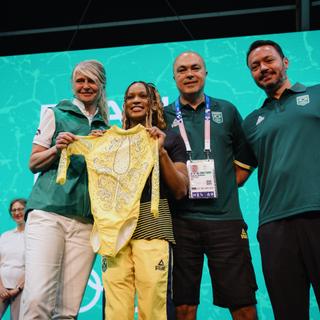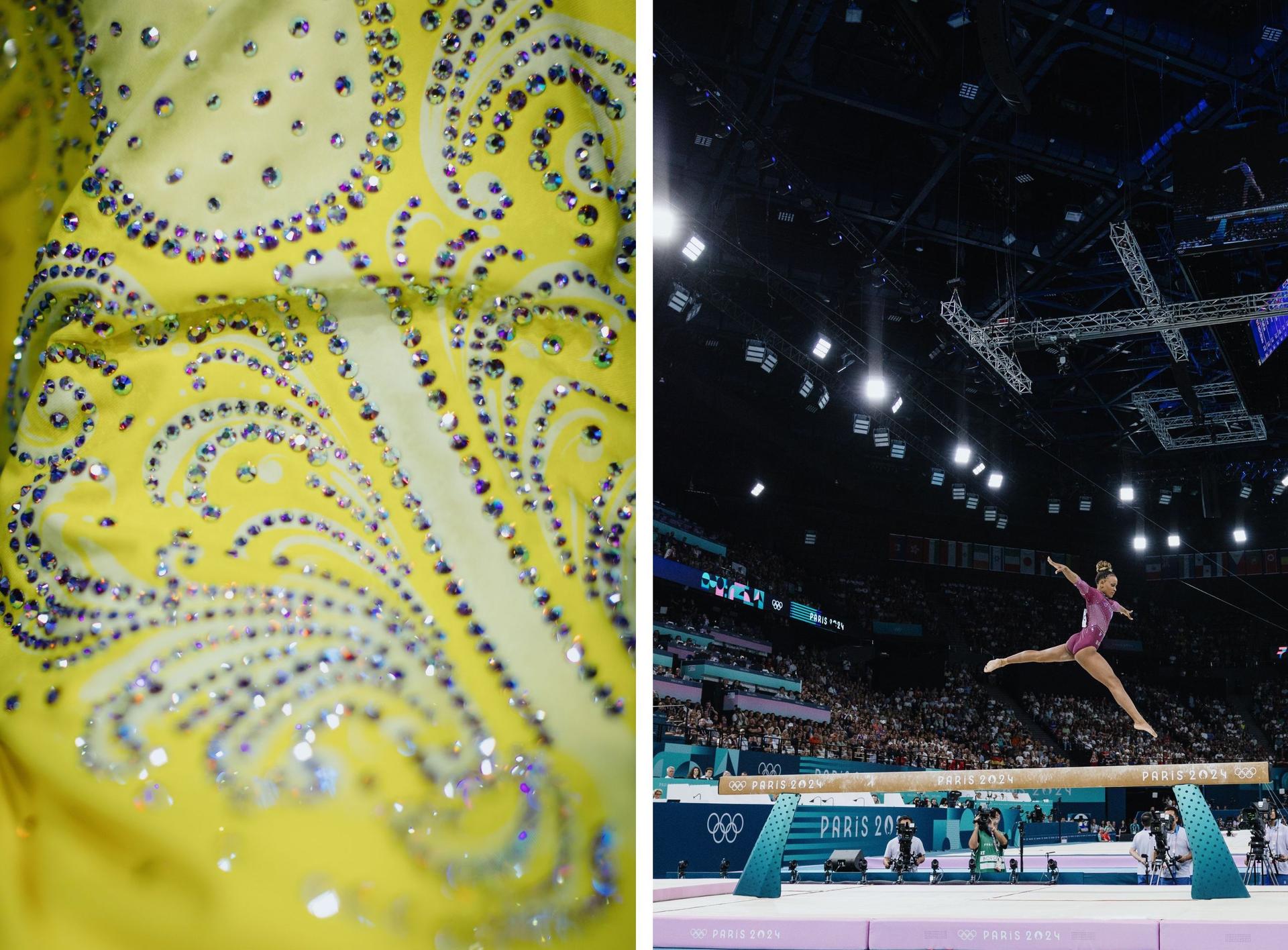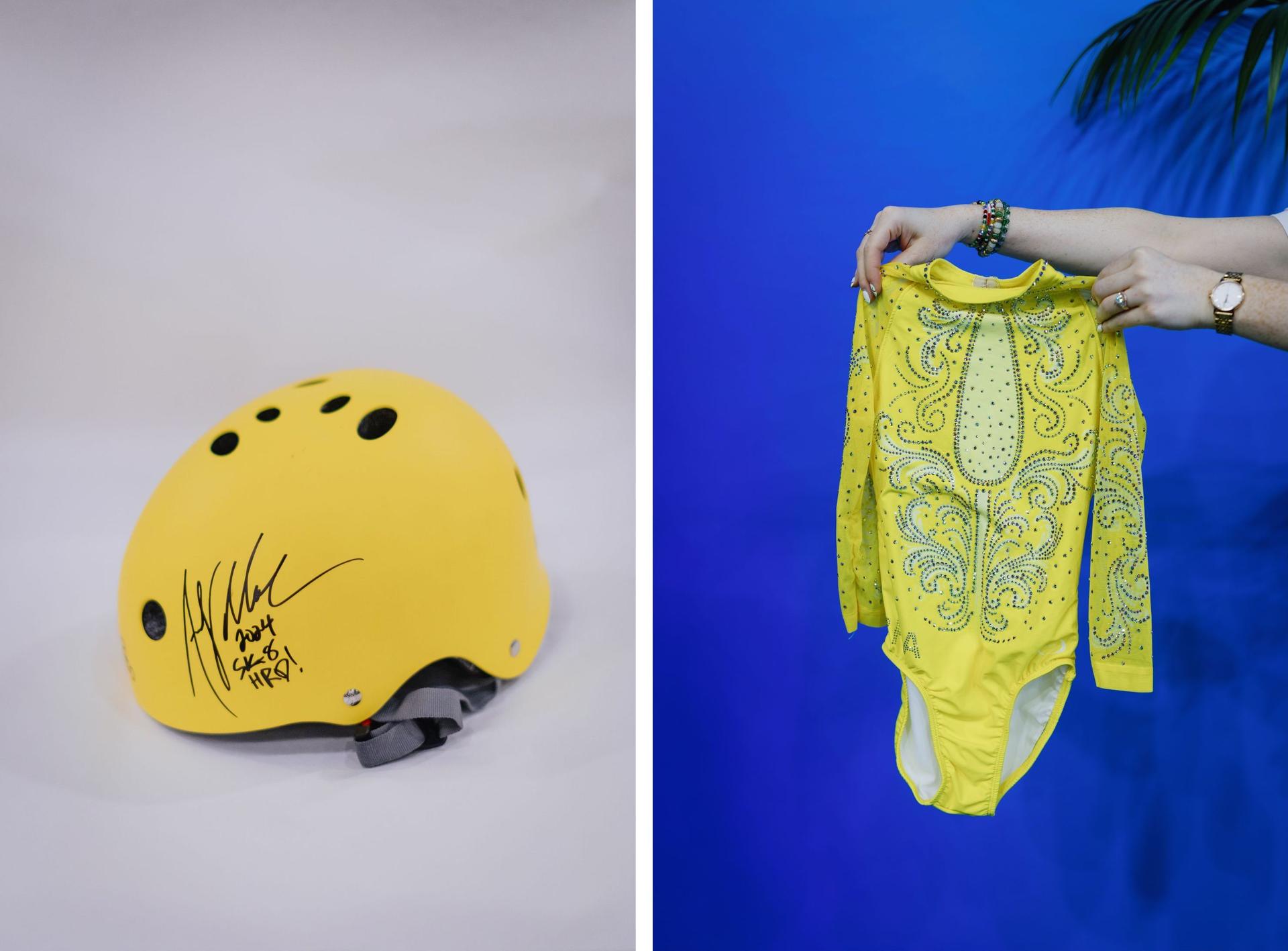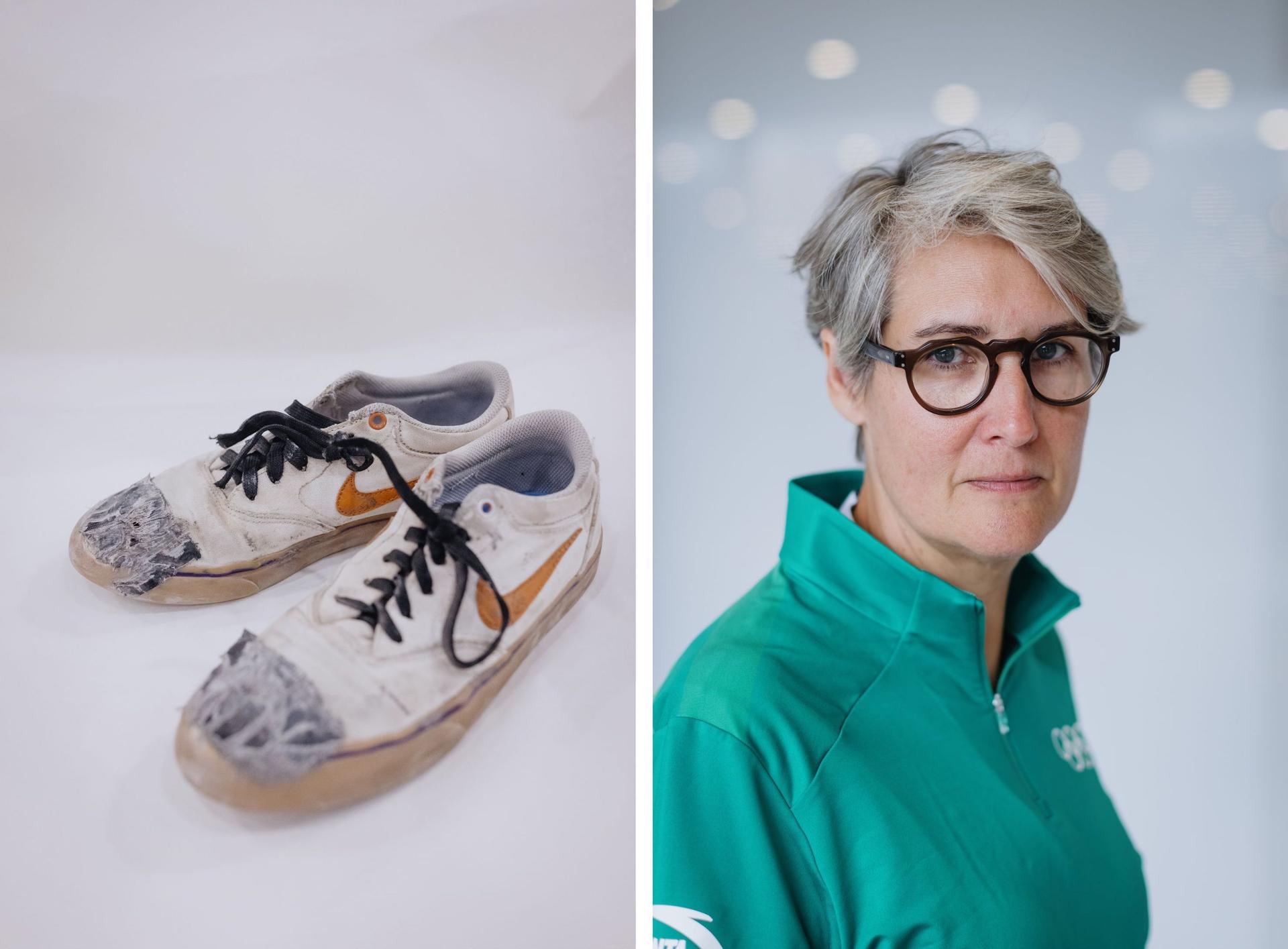


Paris Olympics: Djokovic's racket, Rebeca Andrade's leotard, Aya Nakamura's dress... The IOC museum is hunting down Olympic treasures
NewsTeams from the Olympic Museum in Lausanne have been diligently acquiring artifacts from the Paris 2024 Games to chronicle the events. This collection, which includes a range of sports memorabilia, has been assembled through a process requiring both patience and diplomacy.
Like a team of treasure hunters or detectives, the Olympic Museum in Lausanne has been quietly amassing a trove of sports history on the sidelines of the Paris 2024 Games. Their collection includes a leotard, a pair of sneakers, a racket, a helmet, and even a surfboard, each piece adding to the narrative of the Games. They could all be found in a sports store but will soon be on display in the International Olympic Committee's museum.
Each item has a unique story representing a feat, a legend, an atypical destiny, or a testimony to the evolution of sporting techniques and Olympic disciplines. They will join one of the T-shirts worn by the sprinter Usain Bolt in Beijing in 2008, the American "Dream Team" basketball from the 1992 Barcelona Olympics, and the shoes worn by Jesse Owens, in Berlin, in 1936, among the 90,000 or so items in the museum's collection.

On Wednesday, August 7, at Casa Brasil, at the Parc de La Villette, Rebeca Andrade gave her canary yellow leotard set with mirrored sequins to the museum. Even before it was known that she would be the floor exercise gold medalist, the Olympic Museum had been keen to acquire one of the outfits worn by the sportswoman. Hailing from a modest background, she has emerged as Brazil’s most decorated Olympic athlete. "You perfectly embody the values of Olympism," said Yasmin Meichtry, the museum's associate director, when the gymnast presented the leotard. Rebecca Andrade also made a name for herself in Paris by beating American star Simone Biles, one of whose outfits is already featured in the collection.
A sword in the subway
The quest for these objects is more difficult than it seems. There are the one-off pieces, such as the made-to-measure swimwear for the artistic swimming event as well as the outfits worn by the stars, particularly in American basketball or track and field athletes, which are harder to come by. It's a painstaking job that is sometimes planned in advance and sometimes undertaken on the spot. Before the Olympic Games commence, the museum drafts an ideal list of athletes who embody unique stories and the Olympic spirit. It meticulously ensures that its collection represents a diverse array of continents, disciplines, genders, and sports federations. Concurrently, the museum prepares for its global touring exhibitions.


The hunt for an item generally starts by first contacting the international federation of the sport concerned, before gradually approaching the athlete's entourage. "The aim is to be as little bother as possible to the athlete as possible," said Anna Volz Bot, the museum's senior manager. "The museum's representatives intervene at the end of the competitions; they are in contact with those close to the athletes and try to be in the right place at the right time. For example, the helmet worn by the competition's doyen, 51-year-old Andy MacDonald from the UK, was collected while still damp after the skateboard event. "It is always said that urban sports are played by young people; this helmet is proof that all generations are present at the Olympics: veterans and young people alike," said the museum's curator Anne-Cécile Jaccard By the same token, they acquired the discarded sneakers of 13-year-old Finnish Heili Sirvio, one of the youngest competitors in the Games.
You have 47.92% of this article left to read. The rest is for subscribers only.
